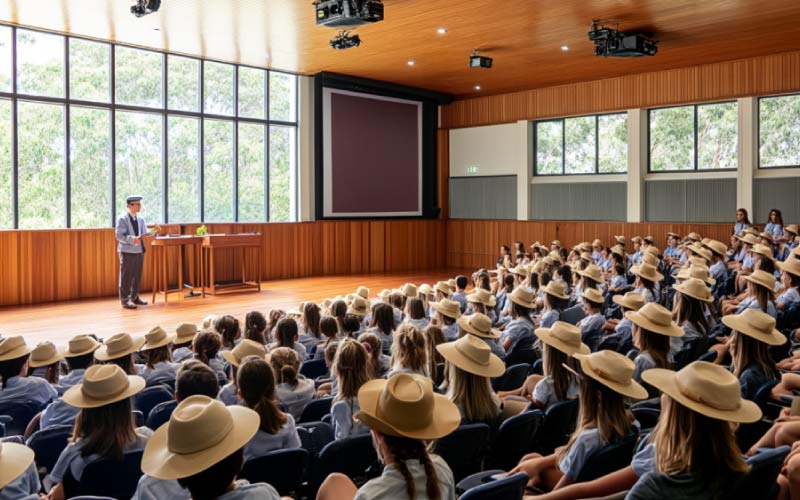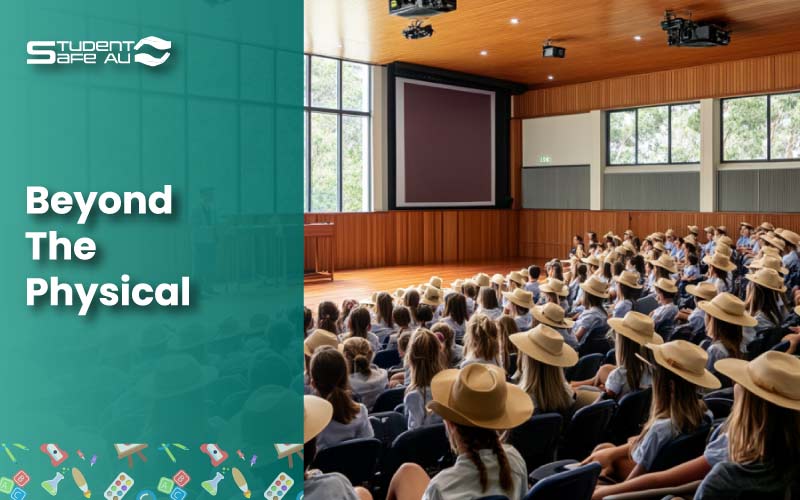How to uphold the emotional and mental safety of your students.
When we talk about school safety, it’s easy to focus on physical and detectable threats. However, for young children, feeling safe goes beyond physical security. Emotional and mental safety are equally important aspects that contribute to a child’s overall well-being. Educators play a pivotal role in reassuring students’ feelings of safety and creating an environment where they can thrive academically and personally.
The Emotional and Mental Experience of School Safety
Emotional and mental safety in schools encompasses a child’s sense of being respected, valued, and free from fear and anxiety. This form of safety is crucial as it impacts a child’s ability to learn and interact positively with others. Here are some ways educators can foster this sense of safety:
Addressing Bullying
Bullying is a significant issue that can severely impact a child’s emotional and mental health. Schools need to have robust anti-bullying policies and programs in place. Educators should:
- Create Awareness: Teach students about the effects of bullying and the importance of kindness and empathy.
- Encourage Reporting: Ensure students know how to report bullying and feel comfortable doing so.
- Intervene Promptly: Address bullying incidents immediately and provide support to both victims and perpetrators.
- Foster Inclusivity: Promote an inclusive school culture where diversity is celebrated, and every student feels valued.
Safe Commuting to School
The journey to and from school can also be a source of anxiety for students. Ensuring safe transportation options can alleviate these worries:
- Reliable Transport Services: Partner with trusted school transport providers like Student Safe AU, which prioritise student safety and provide real-time tracking of vehicles.
- Educate on Road Safety: Teach students basic road safety rules and the importance of being vigilant while commuting.
- Buddy Systems: Implement buddy systems where older students accompany younger ones, providing them with a sense of security.

Promoting Situational Awareness
Teaching children to be situationally aware helps them recognise and respond appropriately to their surroundings. This is essential for their safety both in and out of school:
- Interactive Learning: Use role-playing scenarios to teach students how to handle different situations, such as encountering a stranger or dealing with an emergency.
- Clear Instructions: Ensure students know the school’s layout, including exits and safe areas, and understand emergency procedures.
- Empowerment: Encourage children to trust their instincts and seek help if something feels wrong.
Dealing with Unexpected Situations Calmly
Unexpected situations can arise at any time, and it’s important for students to know how to remain calm and act appropriately:
- Regular Drills: Conduct regular emergency drills, such as fire drills and lockdown drills, to prepare students for various scenarios.
- Mental Health Support: Provide access to counsellors and mental health professionals who can teach coping strategies and offer support.
- Communication Channels: Establish clear communication channels for students to report concerns or seek assistance.
Student Safe AU: Enhancing School Safety
For independent schools in Australia, partnering with Student Safe AU can significantly enhance school safety. Student Safe AU offers comprehensive solutions that address various aspects of student safety, from school transportation to mental well-being.
- Reliable Transportation: Student Safe AU provides safe and reliable student transport services with real-time tracking, ensuring students arrive at school and home safely.
- Enhanced Communication: The platform offers secure communication channels between schools and parents, keeping everyone informed about safety measures and incidents.
- Emergency Response: Student Safe AU equips schools with tools for efficient emergency responses, ensuring quick and coordinated actions during crises.
- Mental Health Support: By integrating mental health resources, Student Safe AU helps schools support students’ emotional and mental well-being.
Conclusion
Creating a safe school environment requires a holistic approach that includes physical, emotional, and mental safety. By addressing issues such as bullying, ensuring safe commutes, promoting situational awareness, and preparing students for unexpected situations, educators can foster a sense of security among students.
Partnering with Student Safe AU further enhances these efforts by providing reliable bus hire for education, effective communication, and comprehensive safety solutions. Prioritising school safety in all its forms ensures that students can learn and grow in a supportive and secure environment.
